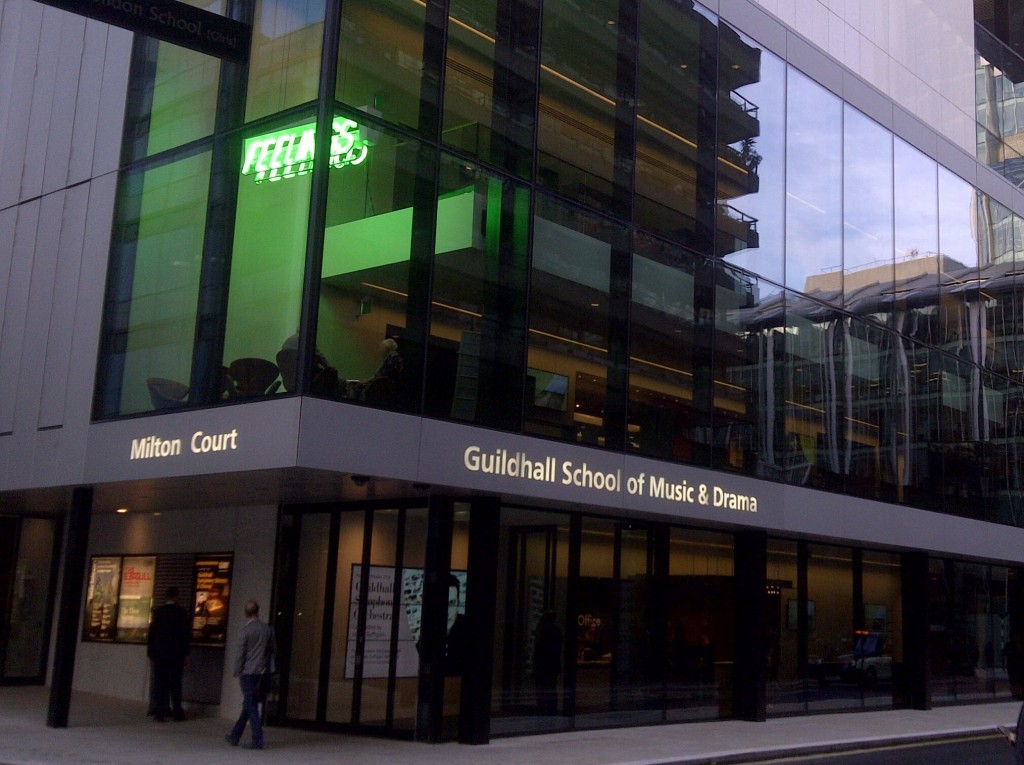September 26th 2013 saw the official opening of the stunning new Milton Court facilities for the GSMD that were contemplated as long ago as 1996. A large group of sponsors, suppliers, students and staff (along with myself) filled the Concert Hall together with distinguished guests, to listen to a short concert and formal opening by The Lord Mayor, Alderman Roger Gifford.
The Guildhall School of Music first opened its doors in 1880. The premises then had been a disused warehouse and there were just 62 students. By 1896 a new building was completed and opened by the Lord Mayor as has every significant new home since. By 1935 the school had added ‘& Drama’ to its title and it moved again in 1977 to the Barbican. Today the School has some 900 students from all over the world and in Milton Court, named after poet John Milton has a ‘paradise gained’ of facilities that can stand equal to any in the world. There can be no doubt that Milton Court will be the envy of students far and wide and provide an inspiring environment for study and learning.
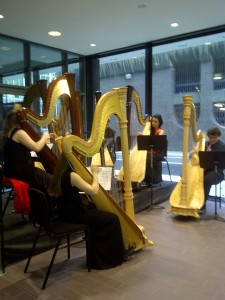 On arrival just after 6.00pm, guests were presented with their theatre tickets and a souvenir programme of the evening’s events. Greeting us in the lobby was a delightful harp ensemble filling the public space with restful music. (Pictured right).
On arrival just after 6.00pm, guests were presented with their theatre tickets and a souvenir programme of the evening’s events. Greeting us in the lobby was a delightful harp ensemble filling the public space with restful music. (Pictured right).
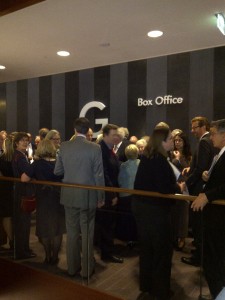 By 6.45pm the lobbies were full and we started to make our way into the concert hall. (Guests filing in to the lobby, pictured left).
By 6.45pm the lobbies were full and we started to make our way into the concert hall. (Guests filing in to the lobby, pictured left).
The concert hall is on 2 levels with a circle gallery that runs a full 360 degrees around the periphery with seating on all 4 sides, even directly above the orchestra. On first entering I caught a brief moment of the brass section tuning to the organ, which we had made in sapele wood to match all the other woodwork in the hall.
The concert opened with a piece especially written for the opening by Julian Philips, head of composition at the Guildhall School. ‘Come Forth to Play’ is a piece for two brass choirs, organ and percussion, so our Viscount Organ was part of the very first piece to be heard in concert in the hall. As you would expect with brass and percussion the piece had some very loud sections but the organ held its own and the bass registers particularly came through in support of the brass players all situated on the upper circle gallery.
Some 35 Orchestral players took the stage for the next 2 works. Soprano Sally Matthews joined the orchestra for 2 Mozart arias and then Alison Balsam played the Haydn Trumpet Concerto in E Flat Major. (Picture below, is of Alison taking a bow).
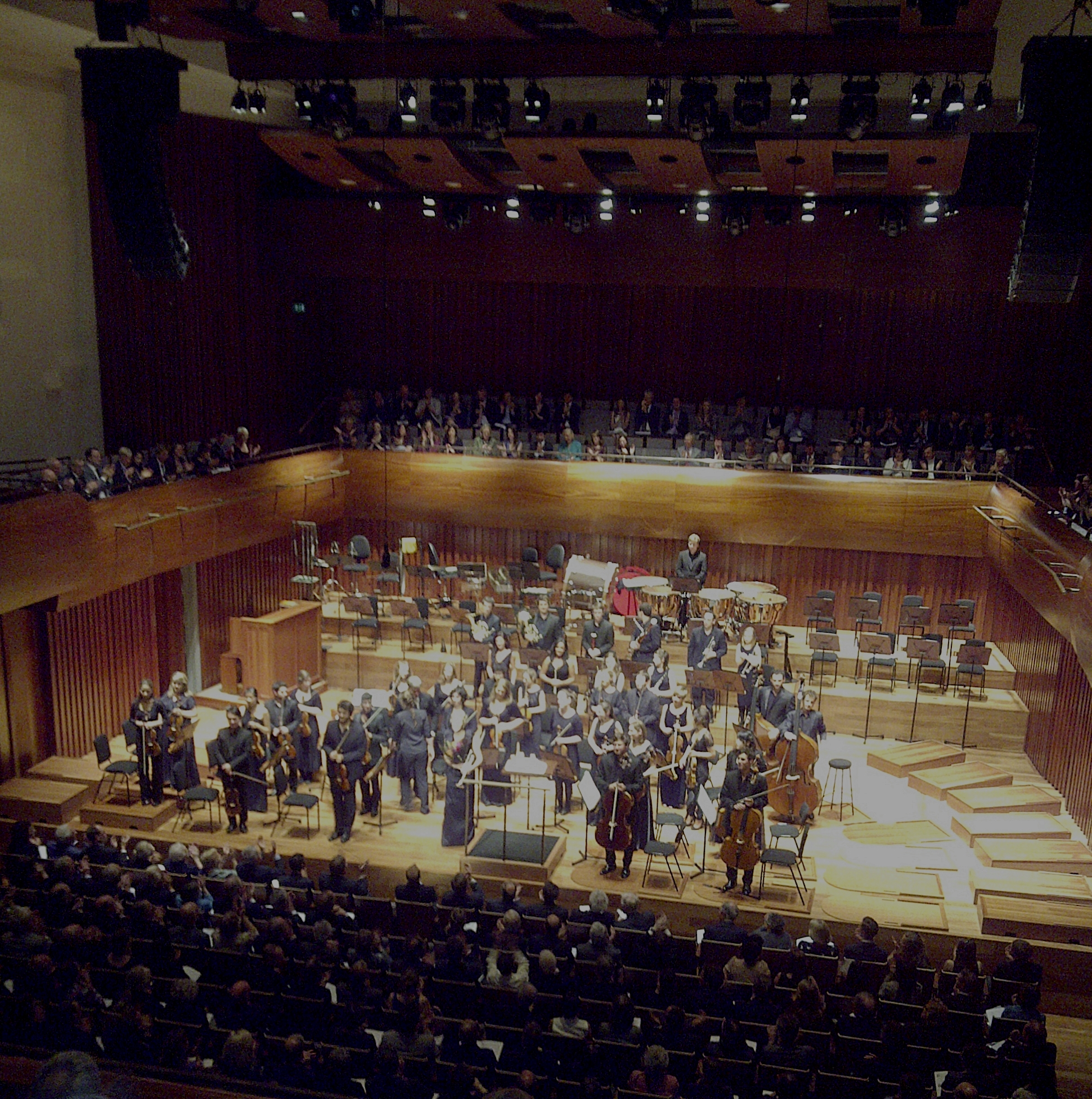
The orchestra grew to a full compliment of 80 with hardly a space left on the stage for the final piece, Elgar’s Cockaigne Overture also known as In London Town, the former title being derived from the jocular thought of London as the Country of Cockneys’.
The hall, which has a very good acoustic, was filled with sound, the orchestra in full swing enjoying every moment of this humorous piece were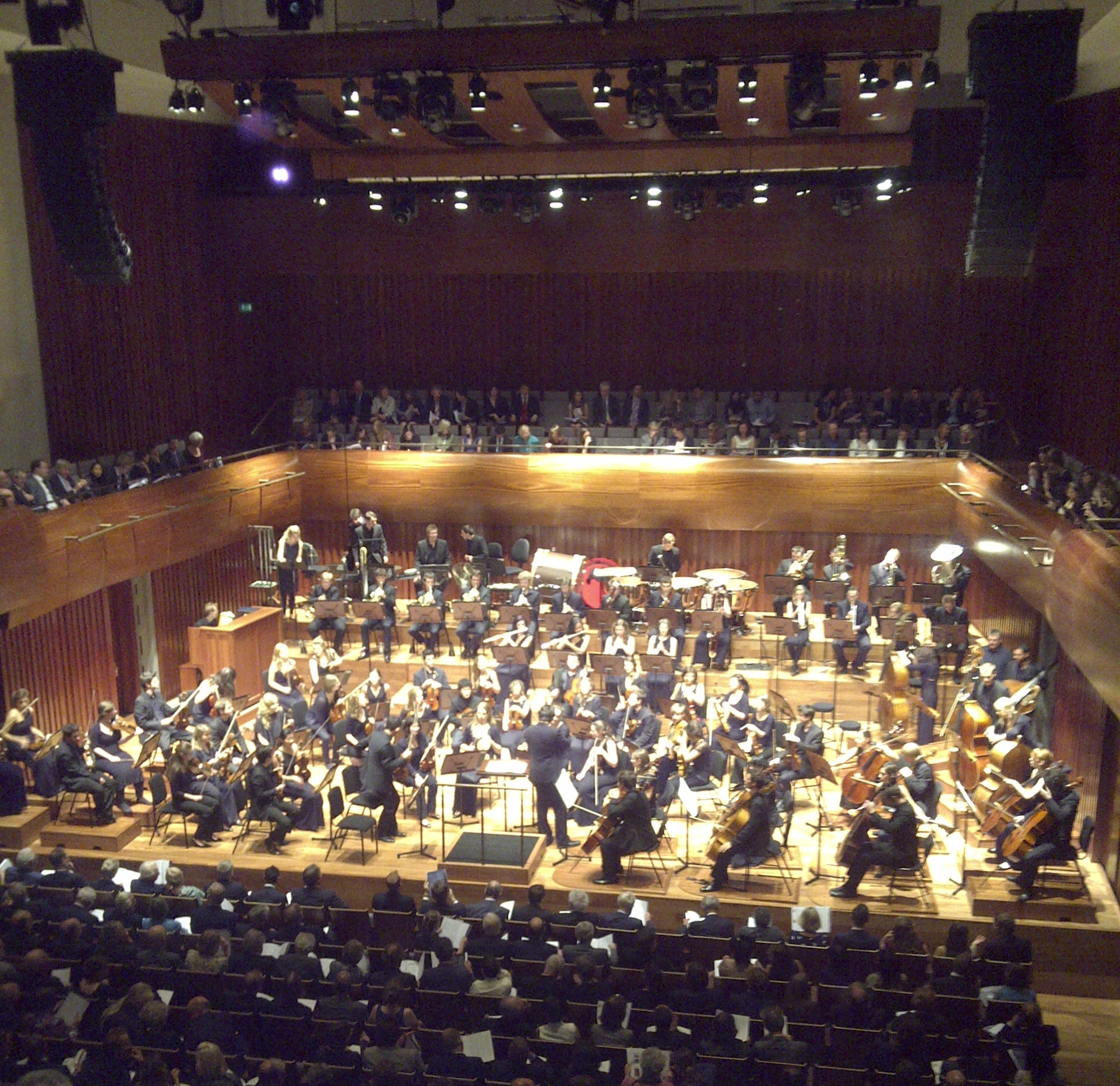 joined in the last few bars with the full organ to end the piece in fine style. (Pictured right).
joined in the last few bars with the full organ to end the piece in fine style. (Pictured right).
There then followed a brief presentation ceremony conferring honorary fellowships of Gerald Ronson CBE and the Honourable David McAlpine, both men critical to the delivery of this major London Development which includes a 36 storey block providing 285 apartments.
The building was then thrown open to guests who were treated to a champagne reception. Students were enthusiastically showing off their new facilities. Oh to be student once again!
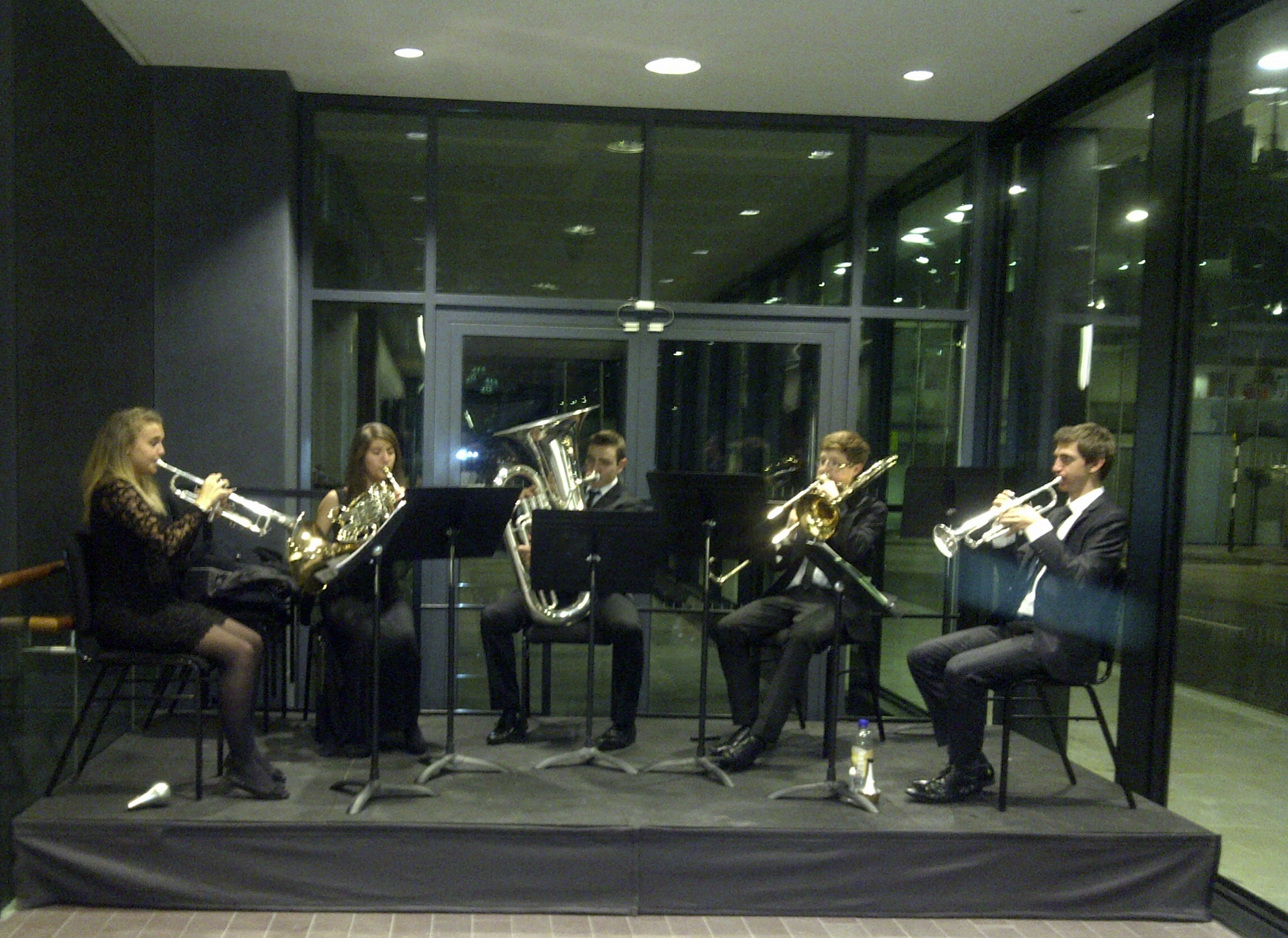 Here are just a few of the statistics that convey the wealth of facilities the students will enjoy. 11385 sq mts of floor space, 14 new pianos, 27 shower cubicles, 506 stage lights, 5 washing machines, 20 lifts under the concert hall stage and much much more not to forget one marvellous digital concert organ!
Here are just a few of the statistics that convey the wealth of facilities the students will enjoy. 11385 sq mts of floor space, 14 new pianos, 27 shower cubicles, 506 stage lights, 5 washing machines, 20 lifts under the concert hall stage and much much more not to forget one marvellous digital concert organ!
By now the harp ensemble had been replaced by a brass ensemble (pictured left) and once more the public spaces were filled with music and chatter as the evening drew to a happy end.
I have had a passion for church organs since the tender age of 12. I own and run Viscount Organs with a close attention to the detail that musicians appreciate; and a clear understanding of the benefits of digital technology and keeping to the traditional and emotional elements of organ playing.
